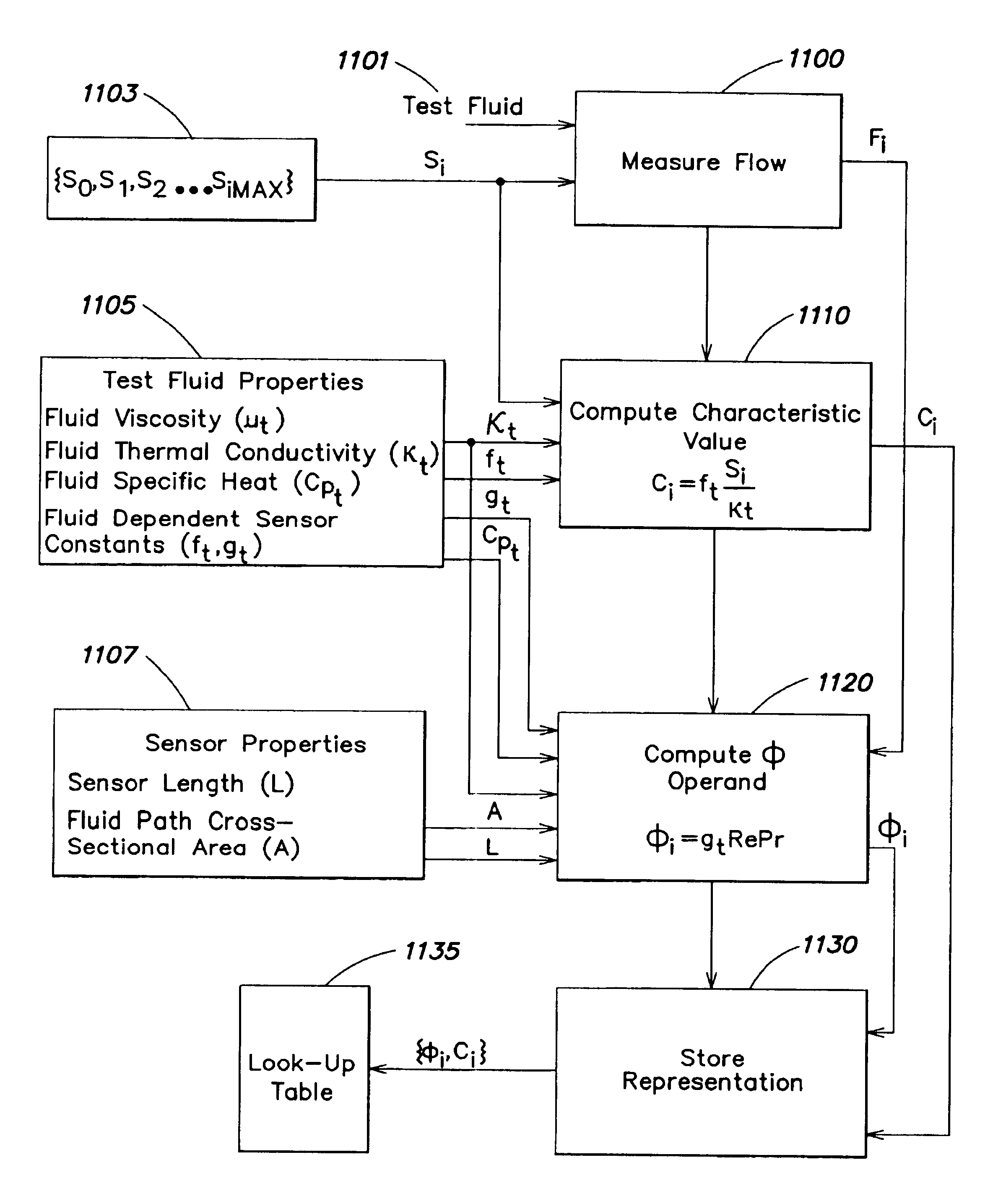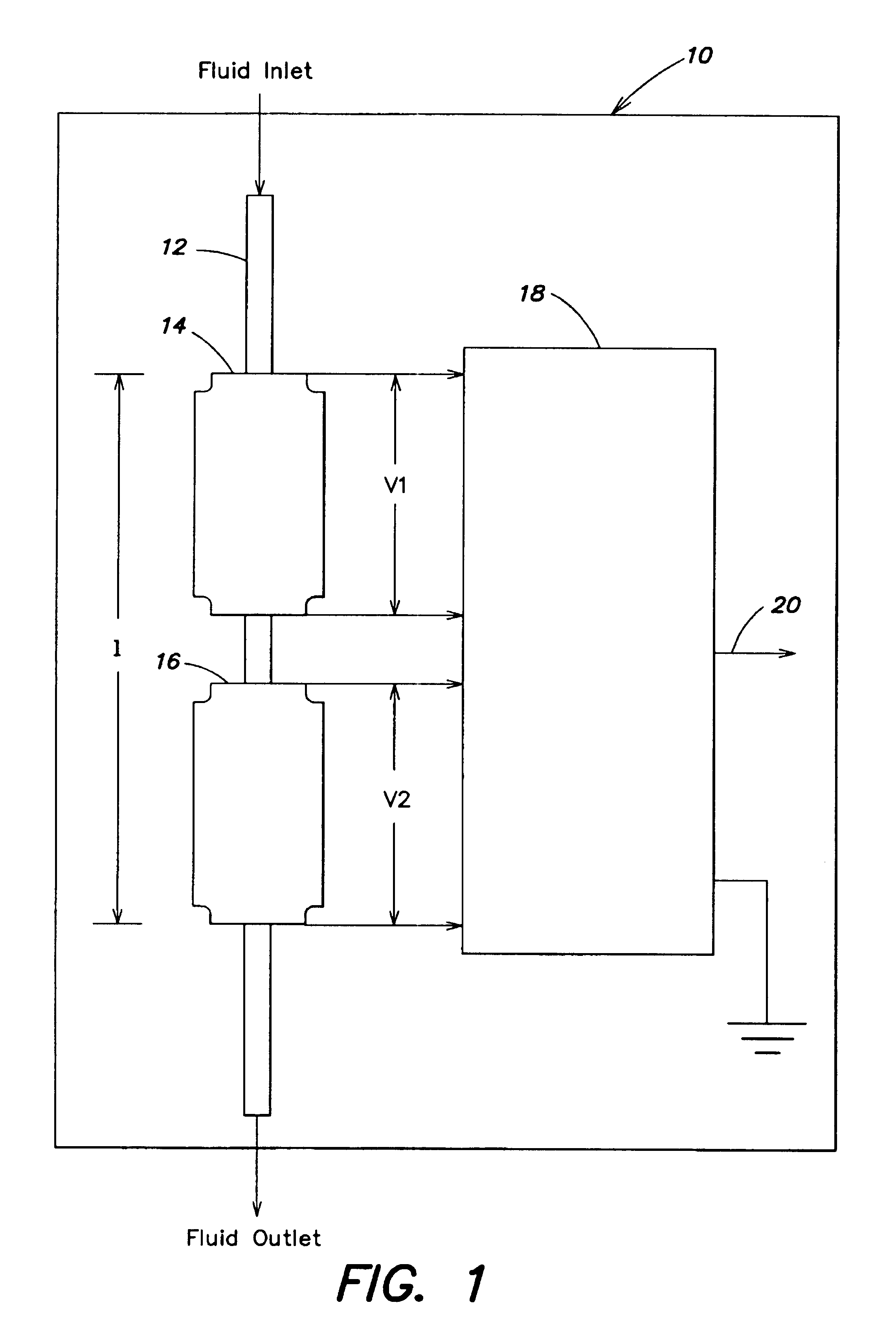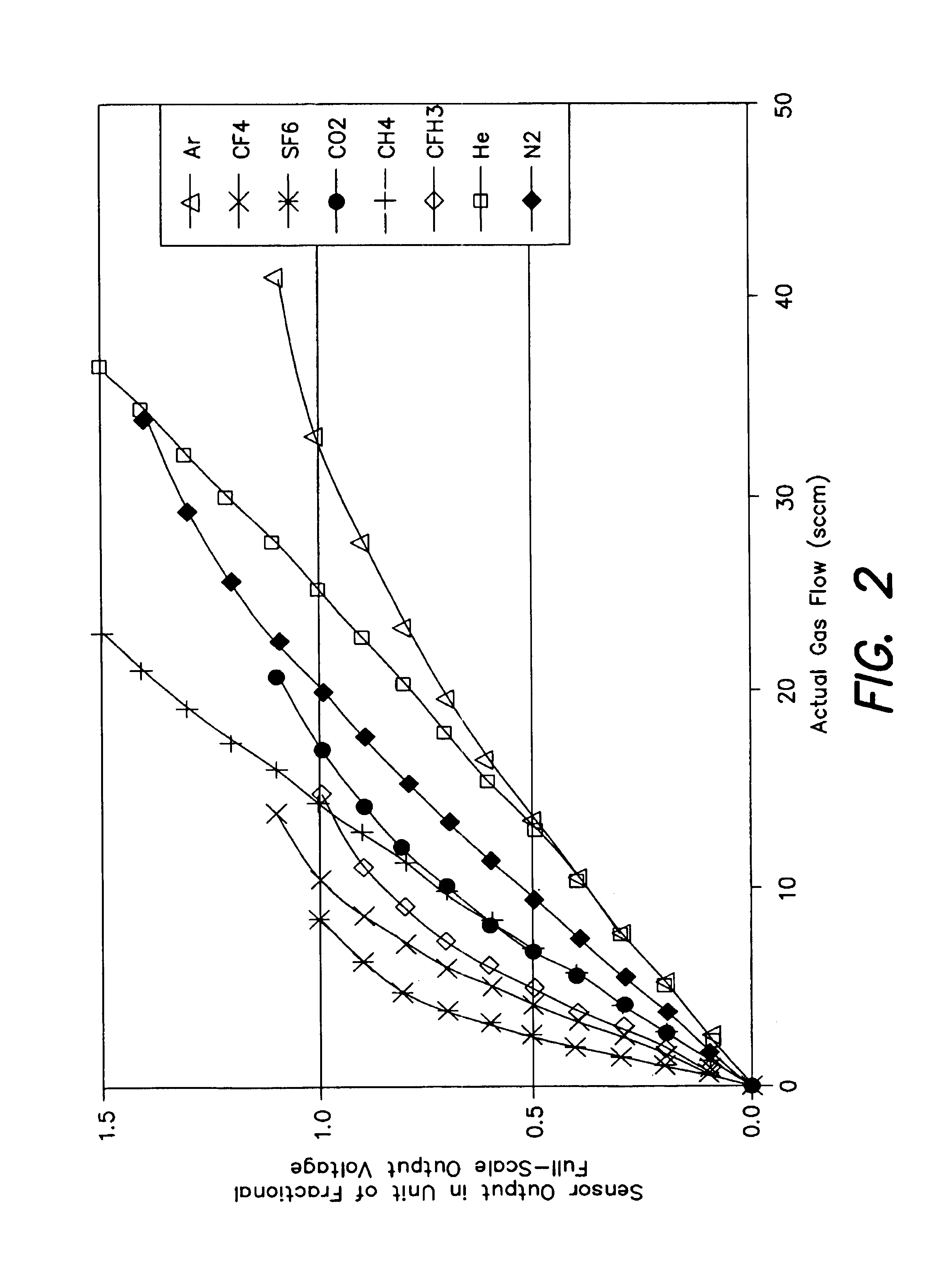Flow sensor signal conversion
a flow sensor and signal technology, applied in the field of mass flow sensors, can solve the problems of difficult to develop a flow sensor that responds satisfactorily to a range of fluids over an adequate range of flow rates, and is not well understood how the sensor response curves vary, so as to facilitate the determination of a linearization curv
- Summary
- Abstract
- Description
- Claims
- Application Information
AI Technical Summary
Benefits of technology
Problems solved by technology
Method used
Image
Examples
Embodiment Construction
[0043]Methods have been proposed to address the difficulties that may result from variation in the behavior of a sensor when operating with different fluids. The variation may be influenced, in part, by the non-linear relationship between flow rate and sensor output. For example, restricting operation of the flow sensor to a linear range of a sensor response curve for a particular fluid may mitigate problems associated with the non-linearity of the sensor. As illustrated in FIG. 2, a sensor response curve for a particular fluid may have a portion that is approximately linear. By considering only flow rates within this limited range, sensor output values can be assumed to have an approximately linear, and thus predictable, relationship with the fluid flow.
[0044]However, a significant portion of a desired range of use of many of the sensor response curves lies outside the respective linear range and cannot be adequately approximated by a straight line. As such, limiting flow rates to ...
PUM
 Login to View More
Login to View More Abstract
Description
Claims
Application Information
 Login to View More
Login to View More - R&D
- Intellectual Property
- Life Sciences
- Materials
- Tech Scout
- Unparalleled Data Quality
- Higher Quality Content
- 60% Fewer Hallucinations
Browse by: Latest US Patents, China's latest patents, Technical Efficacy Thesaurus, Application Domain, Technology Topic, Popular Technical Reports.
© 2025 PatSnap. All rights reserved.Legal|Privacy policy|Modern Slavery Act Transparency Statement|Sitemap|About US| Contact US: help@patsnap.com



